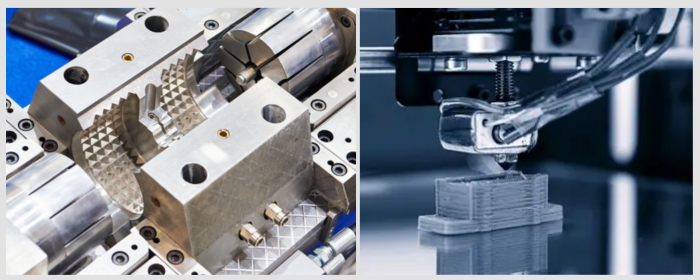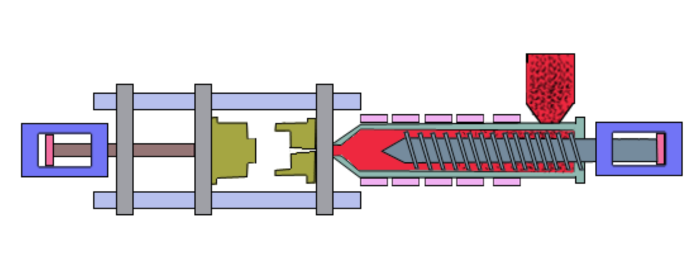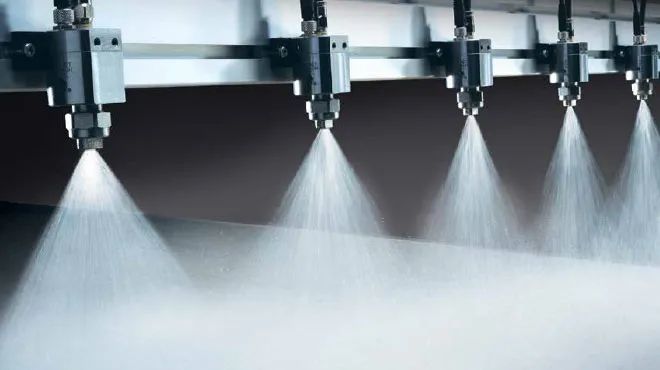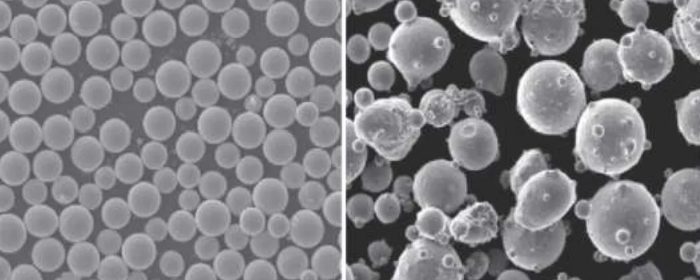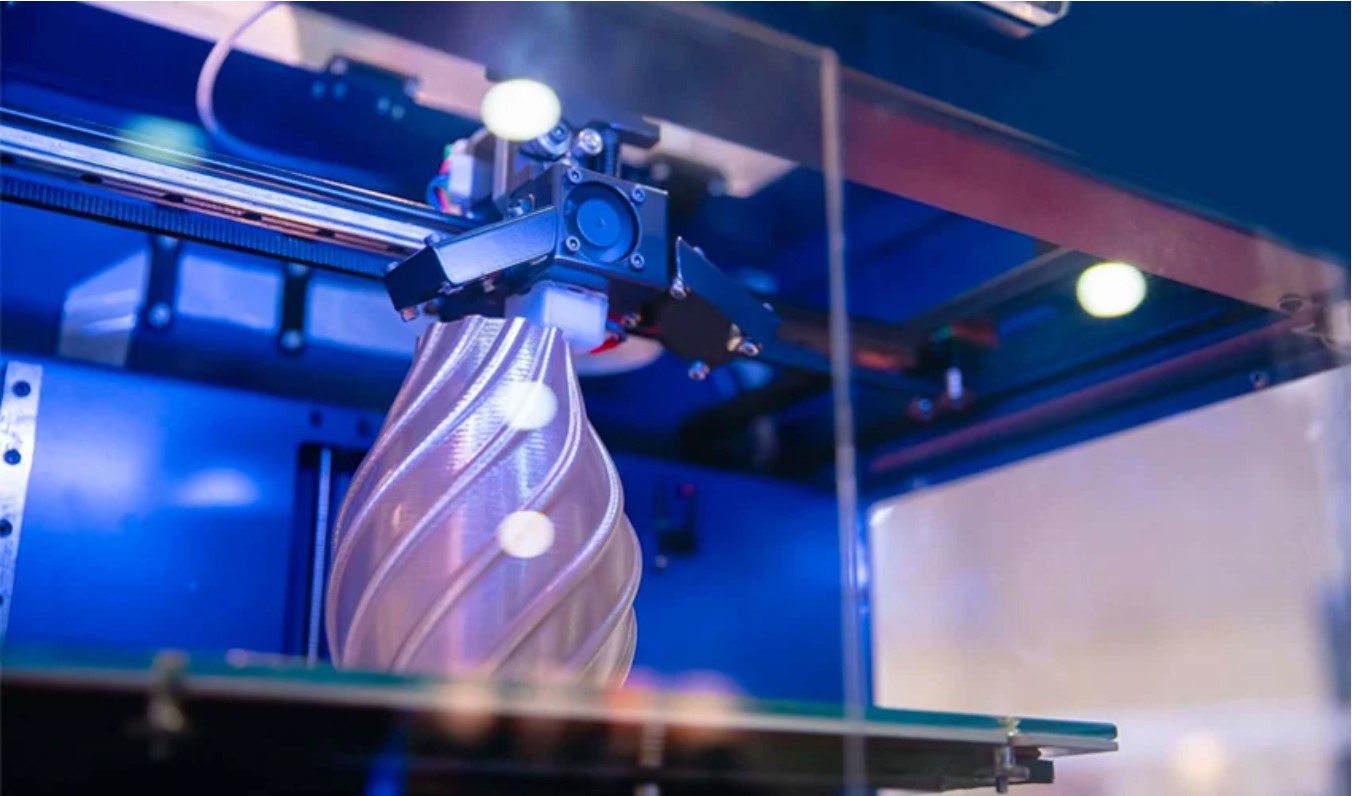

Atomization is the optimal method for producing fully alloyed powders. In industrial practice, various atomization processes are classified based on atomization media and principles. Water atomization, gas atomization, plasma rotating electrode atomization, vacuum atomization, and ultrasonic atomization are currently mainstream processes. How do they differ?
Water atomization utilizes high-pressure water jets to disintegrate molten metal into alloy powders. This method involves pouring superheated molten metal into an atomizer, where high-pressure water impacts the stream to form droplets that solidify into powder. Core equipment includes melting furnaces, atomizers, and collection systems, with atomizer design critically influencing powder fineness.
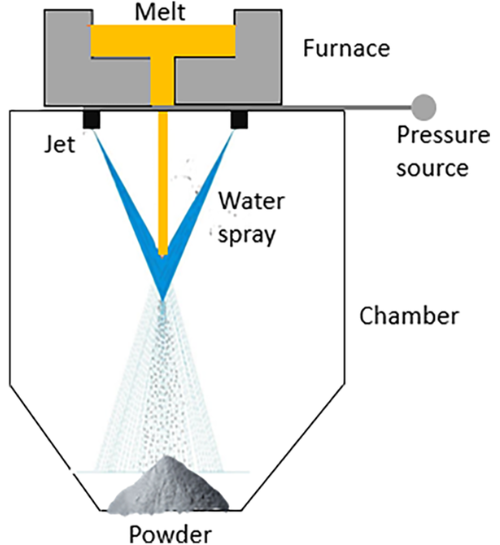
Fig 1. Schematic of water atomization.[1]
Water atomization has the features of short process flow, low cost, and minimal industrial waste, which is suitable for cost-sensitive mid-to-low-end products. It yields powders with poor sphericity, high oxygen content, and cannot process chemically reactive metals.
Gas atomization is the dominant powder production process, holding 80% of the entire production. During the process, the molten metal droplets undergo gas shear and compression during free fall, which results in laminar fiberization. Self-disintegration due to pressure imbalance by sudden pressure decrease takes place upon exit of droplets from the effective atomization zone. Gas atomization types based on heating elements:
VIGA uses medium-frequency induction heating to melt metals in ceramic crucibles at 1,500-1,600°C. Its core advantage lies in mature industrial scalability, with batch capacities exceeding 500kg, ideal for continuous production of nickel-based superalloys and stainless steel. However, ceramic crucibles cause oxygen pickup and may introduce Al₂O₃ inclusions, making it unsuitable for reactive metals like titanium.
EIGA recycles pre-alloyed rods as electrodes and melts them using induction coils while maintaining a vertical rate of feed for atomization. Crucible-free design minimizes impurities, creating ultra-clean powders – the industry standard in medical-grade titanium. The EIGA method also has some drawbacks. Alloy preforms are more expensive than alloy ingots, and the uniformity of the rods greatly affects the chemical composition of the atomized powder. Additionally, controlling the melting rate of the metal rods is challenging, often leading to interruptions in the melt flow or "rod breakage," which can clog the guide tube.
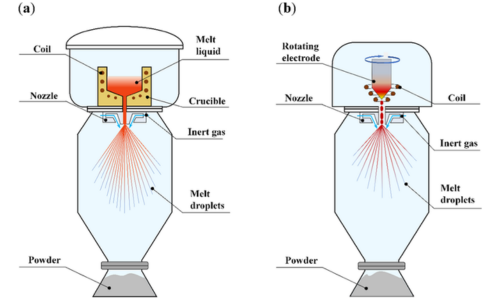
Fig 2. a vacuum induction melting gas atomization (VIGA); b electrode induction melting aerosolization (EIGA)[2]
PIGA employs plasma torches (8,000-15,000°C) for pre-melting and induction coil reheating for homogenization. The double heating stage is effective in handling refractory metals (W, Mo >2000°C) and minimizing high-density element segregation. Drawbacks include greater system complexity and argon consumption (3× greater than VIGA).
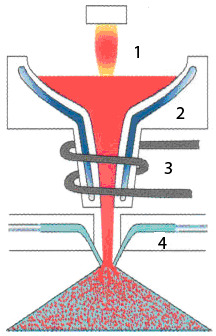
Fig 3. Schematic illustration of PIGA[3]
PA feeds metal wires to plasma heat sources via straightening machines. Molten droplets are atomized by high-pressure gas. PA produces highly spherical, high-purity powders with low oxygen content. High material costs for the wire and poor metal applicability are disadvantages.
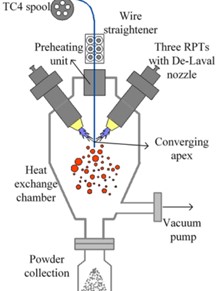
Fig 4. Plasma Atomization[4]
PREP melts the end face of a rotating electrode rod by plasma torches. Centrifugal force atomizes the molten film into droplets, which upon solidification, form spherical powder in an inert atmosphere.
This technology produces powders with good flowability, low gas entrapment, and near-zero satellite particles, resulting in 70-130μm spherical powders with low oxygen content. The need for high rotational speeds rules out mass production of sub-45μm powders.
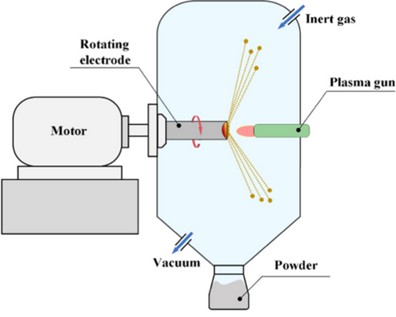
Fig 5. Plasma Rotating Electrode Process[2]
PREP powders are widely used in aerospace, marine, energy, high-technology equipment, and biomedical industries. With the growth of additive manufacturing, PREP has strong potential due to its superior powder properties. Medical implants lean towards plasma processes – a specific report indicates plasma-atomized Ti6Al4V hip prostheses have 40% longer fatigue life than their gas-atomized counterparts. MIM feedstock leans towards gas atomization, and gas-atomized 17-4PH stainless steel is reported to have 25% higher stability.
All three use plasma – how do they differ?
PREP uses centrifugal disintegration, PA uses gas impact, while PIGA is fundamentally a melting process. Gas-free operation is PREP's fundamental distinction.
|
Characteristic |
PREP |
PA |
PIGA |
|
Core principle |
Rotating electrode centrifugal disintegration |
Plasma-melted droplets + gas disintegration |
Plasma + induction dual melting + gas atomization |
|
Plasma function |
Only melts electrode surface |
Melts feedstock + assists atomization |
Primary melting + temperature maintenance |
|
Atomization driving force |
Centrifugal force (no gas) |
Supersonic inert gas impact |
Supersonic inert gas impact |
|
Advantages |
Highest purity (O₂<200ppm); 100% sphericity |
Highest fine powder yield (D₅₀≈15μm); No crucible contamination |
Only process capable of handling W/Ta (>3000°C) |
|
Critical limitations |
Primarily coarse powder |
High satellite particles (>15%) |
Surge in argon consumption (500m³/batch) |
|
Material suitability |
Reactive metals (Ti/Zr, etc.) |
Ni/Co/Fe-based alloys |
Refractory metals/ceramic composites |
|
Typical applications |
Aeroengine titanium components |
Fine powders for 3D printing (e.g. IN718) |
Rocket nozzle W-Cu materials |
Vacuum atomization physically pulverizes gas-supersaturated molten metal under vacuum via gas expansion. Combining vacuum induction melting and inert gas atomization, it produces spherical powders with oxygen content below 0.09% and fine powder yield up to 60.2%. Compared to gas atomization, its sealed environment prevents oxidation and improves sphericity by 20-35%.
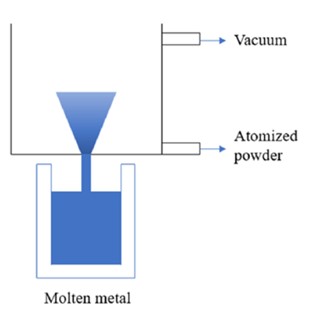
Fig 6. vacuum atomization process[2]
Pros and cons:
Is Vacuum Atomization (VA) similar to Vacuum Induction Melting Inert Gas Atomization (VIGA)?
No. Both are vacuum environments, but there are some basic differences: VIGA has a vacuum only when it melts but gases rush in while atomizing. VA is under steady high vacuum with spontaneous physical atomization without gas. Specific differences as this table.
|
Characteristic |
VIGA Process |
Vacuum Atomization (VA) |
|
Atomization principle |
Inert gas (Ar) impact |
Spontaneous melt boiling, no gas |
|
Vacuum function |
Melting stage only |
Full-process high vacuum |
|
Driving force |
Supersonic gas kinetic |
Bubble expansion from supersaturation |
|
Applicable materials |
Superalloys, titanium |
Low-melting metals (Sn, Pb, Zn) |
|
Oxygen control |
300-800 ppm |
≤100 ppm |
|
Powder morphology |
More satellites, wide PSD |
Near-spherical, fewer satellites |
Ultrasonic atomization is a novel method for the production of ultrafine particles. It induces ultrasonic energy into liquids by direct or indirect contact with ultrasonic horns, yielding spherical powders with unimodal particle size distribution. It possesses the merits of the simplicity of the apparatus, high controllability, and low cost, most suitable for sub-20μm high-performance spherical powders.
Pros and cons:
Fig 7. Contact Ultrasonic Atomization Process Principle
gas atomization vs water atomization
|
Comparison Item |
Gas Atomization (GA) |
Water Atomization (WA) |
|
Atomization medium |
Inert gas (Ar/N₂) |
High-pressure water |
|
Cooling rate |
10³-10⁴ K/s |
10⁴-10⁵ K/s |
|
Powder shape |
Predominantly spherical |
Irregular or elliptical |
|
|
(<5% satellites) |
|
|
Average particle size |
15-150 μm |
10-100 μm |
|
Oxygen pickup |
+100-500 ppm |
+500-3000 ppm |
|
Applicable materials |
Superalloys, Ti, active metals |
Stainless steel, tool steel, soft magnetics |
|
Cost |
High |
Low |
|
Typical applications |
3D printing, MIM, HIP |
Pressed compacts, low-end MIM parts |
gas atomization vs plasma atomization
|
Comparison Item |
Gas Atomization (GA) |
Plasma Atomization (PA/PREP) |
|
Energy source |
Induction/arc melting + gas jet |
Plasma torch + centrifugal force/gas |
|
Powder shape |
Spherical, 5-20% satellites |
Highly spherical, <1% satellites |
|
Particle distribution |
Wide (D₅₀=15-150μm) |
Narrow (D₅₀=50-200μm) |
|
Oxygen pickup |
+200-800 ppm |
+50-150 ppm |
|
Defect control |
Possible hollow particles (<2%) |
No hollow particles/inclusions |
|
Applicable materials |
Most alloys, incl. high-melt |
Ti alloys, superalloys, refractories |
|
Production capacity |
High (5-50 kg/min) |
Low (0.5-5 kg/min) |
|
Cost |
Medium-high |
Very high |
|
Core advantage |
Cost efficiency + fine powder yield |
Ultra-high purity + sphericity |
How to choose?
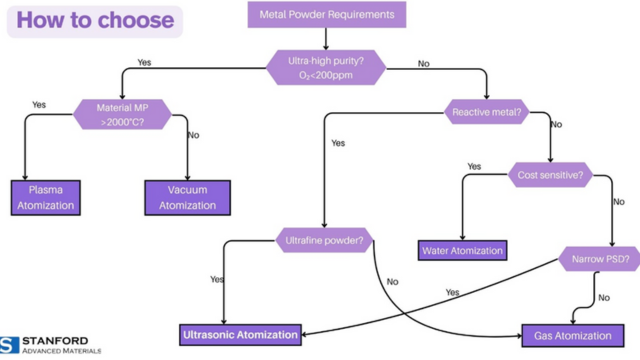
Stanford Advanced Materials (SAM) has been committed to delivering high-quality alloy powders for industrial applications. We offer a comprehensive range of spherical metal powders, including stainless steel, titanium alloy, aluminum alloy, cobalt alloy, nickel alloy powders and so on. These products are designed to meet the diverse manufacturing requirements of powder metallurgy (PM) technologies, such as:
Q1: What is the basic difference between gas atomization and water atomization?
Water atomization employs high-pressure water as the medium, whereas gas atomization employs inert gases. For morphology of powder, water atomization produces irregular/ellipsoidal particles, whereas gas atomization produces spherical powders having satellite particles <5%.
Q2: Under which conditions is ultrasonic atomization suitable?
Ultrasonic atomization's principal advantages are to yield ultrafine powders (D₅₀=5-20μm), zero media contamination, and narrow particle size distribution. However, its production rate is limited to <0.1 kg/h. Typical uses include electronic 3D-printed microstructures and gold/silver conductive paste preparation.
Q3: Why are plasma-based processes preferred for medical implants?
Plasma processes (PA/PREP) own oxygen pickup of only +50-150 ppm, far less than gas atomization's +200-800 ppm.
Q4: Which process offers the best oxygen control?
The capacity of oxygen control is as follows in descending order:
[1] Soong, Shaun & Lai, Wing & Lup, Andrew. (2023). Atomization of metal and alloy powders: Processes, parameters, and properties. AIChE Journal. 69. 10.1002/aic.18217.
[2] Feng, Shuo & Jia, Dongzhou & Ying, Fu & Kong, Xiangqing & Lv, Zhenlin & Zeng, Erjun & Gao, Qi. (2023). Preparation of additive manufacturing powder by external field–enabled: a comparative assessment. The International Journal of Advanced Manufacturing Technology. 131. 1-27. 10.1007/s00170-023-12073-x.
[3] Wang, Li. (2014). Mechanisms of carbide precipitation and carbon solubility in high Nb containing TiAl Alloys.
[4] Yin, Zhengxin & Yu, Deping & Zhang, Qingbo & Yang, Shengyuan & Yang, Tong. (2021). Experimental and Numerical Analysis of a Reverse-polarity Plasma Torch for Plasma Atomization. Plasma Chemistry and Plasma Processing. 41. 10.1007/s11090-021-10181-8.

